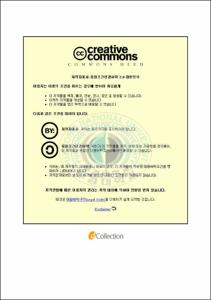들기작업시 몸통각도와 상완각도가 작업부담에 미치는 영향에 관한 연구
- Alternative Title
- A Study of the Effects of the Trunk and the Upper Arm Angles on Workloads in the Lifting Work
- Abstract
- Lifting capacity and difficulty of task are influenced by body posture. In RULA and REBA, a body was divided into segments which formed two groups, A and B. Group A includes the upper and lower arm and wrist while group B includes the neck, trunk and legs. This ensures that whole body posture is recorded so that any awkward or constrained posture of the legs, trunk or neck which might influence the posture of the upper limb. This study aimed to measure EMG (electromyography) MVC (maximum voluntary contraction), RWL(Recommended Weight Limit) and subjective judgment in psychophysical method (Borg’s scale) according to trunk and upper arm angle and to analyze results statistically. The results of this study showed that lifting capacity was more influenced by interaction of body posture rather than angles of each part, and MVC variation according to trunk and upper arms angles should be different patterns. This means that we consider the interaction of trunk angles and upper arm angles when we access risk factors of the postures. This survey can also be used as basic data to evaluate difficulty of lifting tasks according to body postures ergonomically.
- Issued Date
- 2008
- Awarded Date
- 2008. 2
- Type
- Dissertation
- Publisher
- 부경대학교 대학원
- Alternative Author(s)
- Park, Hyung Gu
- Affiliation
- 부경대학교 대학원
- Department
- 대학원 안전공학과
- Advisor
- 장성록
- Table Of Contents
- 1. 서론 = 1
1.1 연구의 필요성 = 1
1.2 연구의 목적 = 4
1.3 연구내용 = 5
2. 배경 이론 = 6
2.1 근골격계질환의 개요 = 6
2.2 최대발휘근력 = 8
2.3 주관적 불편도 = 9
2.4 근전도 분석 방법 = 10
2.5 RULA, REBA기법에 관한 선행연구 = 13
3. 실험설계 및 실험방법 = 21
3.1 피실험자 선정 = 21
3.2 실험기기 = 23
3.2.1 최대발휘근력 측정을 위한 실험기기 = 23
3.2.2 근전도 측정을 위한 실험기기 = 24
3.3 실험변수 = 26
3.3.1 독립변수 = 26
3.3.2 종속변수 = 27
3.3.3 조절변수 = 27
3.4 실험방법 = 28
3.4.1 최대발휘근력 측정 = 28
3.4.2 주관적 불편도 측정 = 29
3.4.3 근전도 측정 = 30
3.4.4 RWL 산정 = 35
4. 실험 결과 = 36
4.1 최대발휘근력 분석 = 36
4.1.1 최대발휘근력 측정 결과 = 36
4.1.2 NMVC 분석 결과 = 38
4.1.3 NMVC ANOVA 분석 결과 = 42
4.2 주관적 불편도 분석 = 45
4.2.1 주관적 불편도 측정 결과 = 45
4.2.2 주관적 불편도 ANOVA 분석 결과 = 46
4.3 근전도 분석 = 47
4.4 RWL 분석 = 51
4.4.1 RWL 계산 결과 = 51
4.4.2 RWL 분석 = 53
5. 결론 및 고찰 = 57
참고문헌 = = 60
Abstract = 74
- Degree
- Master
- Files in This Item:
-
-
Download
 들기작업시 몸통각도와 상완각도가 작업부담에 미치는 영향에 관한 연구.pdf
기타 데이터 / 1.65 MB / Adobe PDF
들기작업시 몸통각도와 상완각도가 작업부담에 미치는 영향에 관한 연구.pdf
기타 데이터 / 1.65 MB / Adobe PDF
-
Items in Repository are protected by copyright, with all rights reserved, unless otherwise indicated.